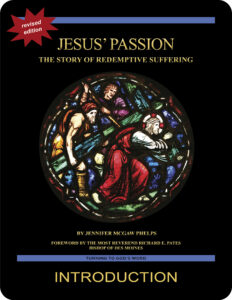Evil One
 This week I’ve chosen to translate the Gospel According to Matthew 5:37 as: “Let your word yes be yes and no be no. More than these things is from wickedness.” The word I chose to translate as “wickedness” sometimes also is translated as “the Evil One” due to an ambiguity in the Greek text.
This week I’ve chosen to translate the Gospel According to Matthew 5:37 as: “Let your word yes be yes and no be no. More than these things is from wickedness.” The word I chose to translate as “wickedness” sometimes also is translated as “the Evil One” due to an ambiguity in the Greek text.
The key phrase in the Greek text is ἐκ τοὐ πονηροὐ (ek tou ponerou). The first word is a preposition meaning “out of” or “from.” The second word is the definite article, “the,” which typically accompanies nouns. The third word is the adjective πονηρός (poneros), a word meaning “oppressed by toils,” “in a sorry plight,” and later in a moral sense “worthless” or “wicked.”
The key translation problem is that the Greek presents us with a strange construction something like we would have in English with “the wicked.” There’s less ambiguity in English, however, since then such a phrase clearly would refer to a person. In Greek, this construction also could be one way of expressing wickedness in the abstract. The difference is typically determined by the gender of the article, but in this particular instance, that information is impossible to determine.
The result of grammatical ambiguity is that this phrase could be referring to either a wicked person or to wickedness. I chose the abstract because it’s not a common idea in Greek that there should be some wicked person or entity—for example, the Evil One or the devil.
related topics: demonic possession; evil; Satan & Beelzebub
you also may like our free Lenten study of Jesus’ Passion (digital only)
 Jesus’ Passion: The Story of Redemptive Suffering is a five-lesson Catholic Bible study offering an in-depth look at the biblical foundations of the movie The Passion of the Christ. This revised study, which has been granted an imprimatur, contains all of the original material of the 2004 edition as well as many new features in an improved, reader-friendly format. Click on the book’s cover to view the introduction. Free digital lessons of Jesus’ Passion: The Story of Redemptive Suffering are available on the website during Lent.
Jesus’ Passion: The Story of Redemptive Suffering is a five-lesson Catholic Bible study offering an in-depth look at the biblical foundations of the movie The Passion of the Christ. This revised study, which has been granted an imprimatur, contains all of the original material of the 2004 edition as well as many new features in an improved, reader-friendly format. Click on the book’s cover to view the introduction. Free digital lessons of Jesus’ Passion: The Story of Redemptive Suffering are available on the website during Lent.
 Click on the picture of the statue of Moses with horns (above) to learn more about Lost in Translation. A new entry is archived each Monday. Contact us to receive Lost in Translation by email every week. You may use any of the contact links on our website to ask Matthew a question.
Click on the picture of the statue of Moses with horns (above) to learn more about Lost in Translation. A new entry is archived each Monday. Contact us to receive Lost in Translation by email every week. You may use any of the contact links on our website to ask Matthew a question.
